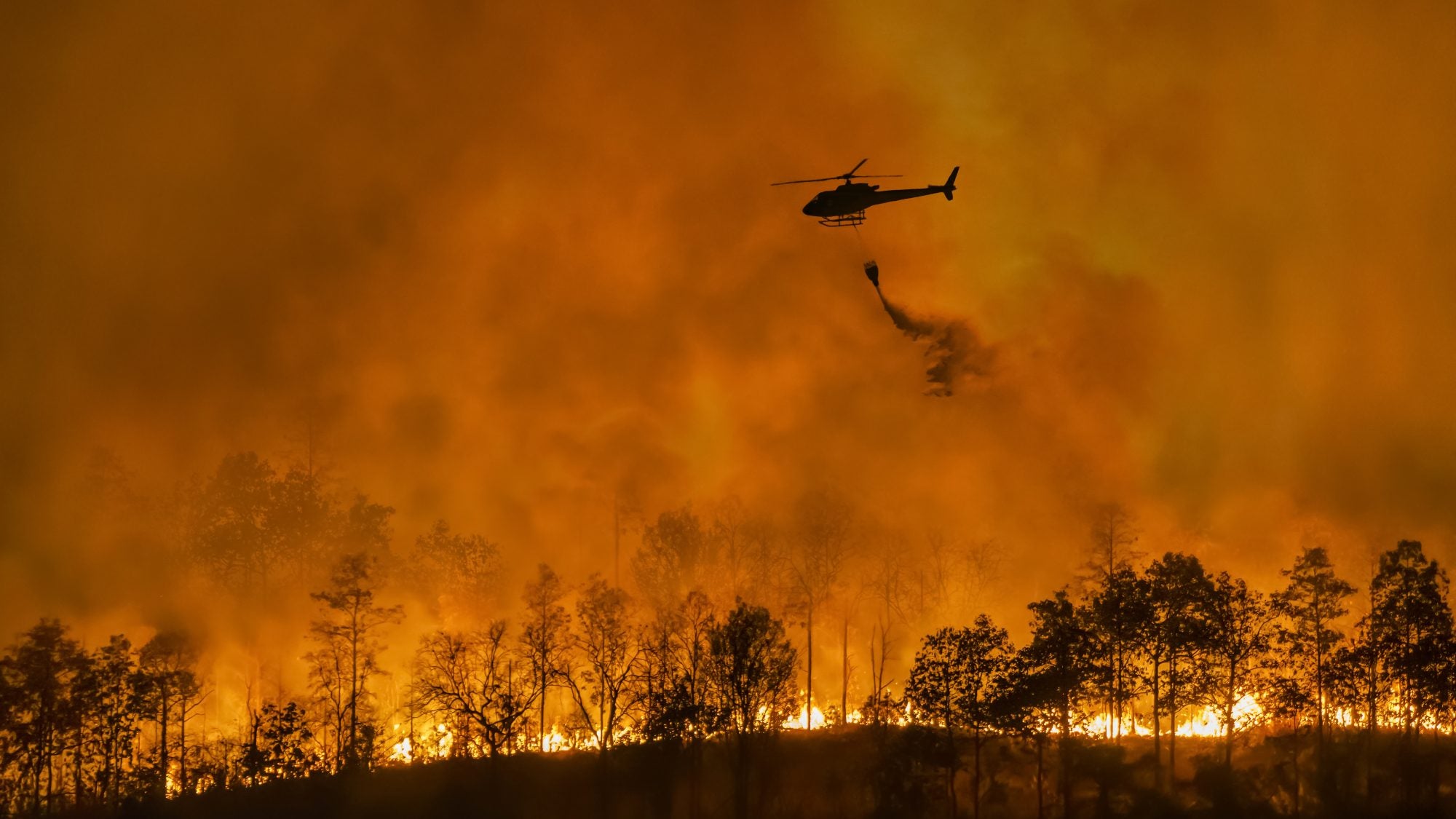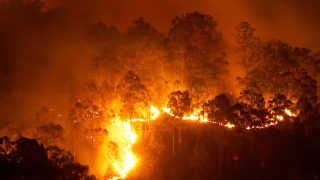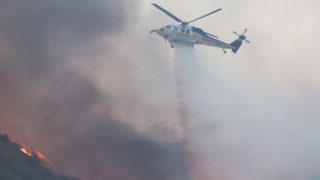With more frequent natural disasters in the face of a changing climate, climate migration is becoming more common. The wildfires around Los Angeles have left residents and businesses having to decide whether to rebuild or relocate, while others may feel like they can’t afford to leave the area.
The series of wildfires that blazed through the Los Angeles area in January killed at least 29 people. It also destroyed over 16,000 buildings with estimates projecting $50 billion in losses.

The fires in southern California are one of the latest examples of people being displaced by natural disasters that are becoming more common in the face of climate change. The World Bank estimates that 216 million people could be forced to migrate within their countries by 2050 due to climate change.
“Some residents will clearly choose to move and others will choose to rebuild,” said Robin Dillon-Merrill, professor in the McDonough School of Business. “It will depend on many personal factors like income sources and the desirability of alternative locations.”
Dillon-Merrill researches how and why people make decisions in the face of uncertainty and risk, such as in response to natural disasters.
Read her take on the considerations people take when deciding to migrate, where migrants could move to in the U.S. and how the fires could shape the future of the Los Angeles area.
Ask a Professor: Robin Dillon-Merrill on Climate Migration and the Los Angeles Fires
Officials expect that it will take up to 18 months to clear the wreckage. What impact will that have on residents and businesses in the meantime?
The impact to the residents and businesses will vary greatly depending on their financial resources. Lower socioeconomic status residents will need to rely on government actions. High socioeconomic status residents will have their own resources to address their own recovery quicker, so we can’t articulate one broad impact. We can look to the 2023 Lahaina fires in Maui to demonstrate that recovery will occur over time but at unequal speeds for those impacted.
What considerations do people typically weigh in deciding whether to rebuild or relocate?
I had a family member who retired to Florida’s Gulf Coast and after two hurricane seasons moved to inland North Carolina. As a retiree, she could choose where to live and did not like the hurricanes. Similarly, some people will have the flexibility to leave the California area. Others will rebuild. Those who rebuild will choose how much of the latest knowledge of fire protection to include in new construction. For example, the Getty Museum was built with the latest knowledge of fire protection and was used as a place to evacuate to in order to survive the fires.
People’s socioeconomic backgrounds will dictate the quality of reconstruction that can be afforded. Typically people in poverty, with low incomes and with less education are less prepared for disasters because preparedness actions are costly. As was shown following Hurricane Katrina, safely reconstructing housing in New Orleans was too expensive, and many of the lower socioeconomic populations simply left. Leaving the area may be easier for these populations too since they are more likely to be renters rather than homeowners.
Do you think residents will choose to rebuild or migrate to areas less prone to climate disasters?
Some residents will clearly choose to move and others will choose to rebuild. It will depend on many personal factors like income sources and the desirability of alternative locations.
The insurance industry in California has been problematic initially because of earthquakes and then because of wildfires, but many researchers are closely studying the insurance markets and making recommendations on how to maintain a functioning market. Most people expect premiums in areas of high risk for disasters will need to increase, but some of the increase may be offset by lower property values in high-risk areas. Higher insurance prices will be difficult for the lowest-income homeowners and thus some form of government aid may be needed.
Have you seen a comparable precedent from the past in which a U.S. climate disaster prompted migration? What kinds of decisions did people make?
The population of New Orleans is still well below Hurricane Katrina levels. It has gradually grown over time but nearly 20 years later is still lower than in 2005. People (especially lower-income Black residents) moved to other cities such as Atlanta and Houston and then never returned to New Orleans.
Many small businesses never reopened, and many manufacturing jobs were lost. Tourism had steadily returned but then was impacted again by COVID-19. But New Orleans continues to be a site for high-profile events including the 2025 Super Bowl.
How will the wildfires affect property value for prime real estate in the Los Angeles area?
Some areas of Pacific Palisades and Altadena may see some negative effects on property values but premium real estate will still be premium due to continued demand for its exclusive locations, and those seeking that real estate have the most resources to mitigate the risks (e.g., fire-resistant building materials, fire-resistant landscaping, greater spacing between structures).
How have the Los Angeles wildfires impacted local businesses in the affected areas? What impact has this damage had on the local economy?
Generally business recovery will depend on many of the same factors that residential recovery depends on, specifically the prior state of one’s finances and insurance. The added twist with businesses is that they need the residents to return to have customers. If residents do not return as was the case in New Orleans following Hurricane Katrina, many businesses will shut down permanently.
For example, if the population levels are ultimately lower, there are fewer people to support grocery stores and schools. Industries such as retail that rely directly on customers will be most impacted and while larger businesses and chains may have more resources to wait while populations recover, if the populations ultimately do not, then the larger business will close too.
Are there any lessons from the Maui wildfire recovery efforts that can be applied here?
If you are considering rebuilding, explore best practices of land use and fire-resistant building materials. Spacing between buildings is critically important because when homes are too close together, intense heat from one burning structure can easily ignite neighboring buildings, and wind-driven embers (burning debris carried by the wind) cause wildfires to spread. Larger buffer zones are needed between structures to prevent embers from landing on neighboring structures.
Many older structures were built before attention was paid to developing fire-resistant materials. Now, there are better roofing materials and even better glass for windows, but these are generally more expensive.
What role, if any, does the government have in regulating migration or incentivizing individuals or businesses to stay and rebuild?
State and local governments certainly want their tax base to recover and be rebuilt, but they need to have better standards for rebuilding in areas prone to wildfires specifically by upgrading building codes to require fire-resistant building materials and other fire prevention best practices (e.g., no landscaping plants within five feet of a home).
Should we expect more climate migration across the U.S. in the future? What states or regions will see the largest influx of migrants?
While some people will stay regardless of climate impacts, some will leave the Southeast over hurricanes, the Southwest over extreme heat, and California for wildfires. Likely areas to see an influx would thus be other parts of the U.S. such as the Pacific Northwest, the Midwest and the Northeast that have historically been less prone to climate-impacted natural disasters.


